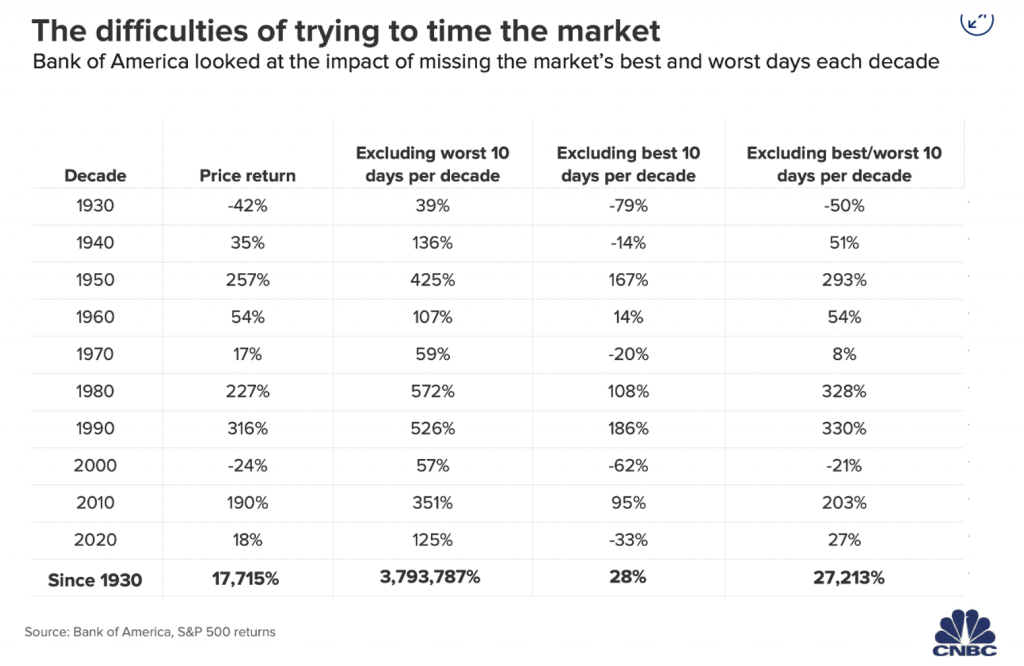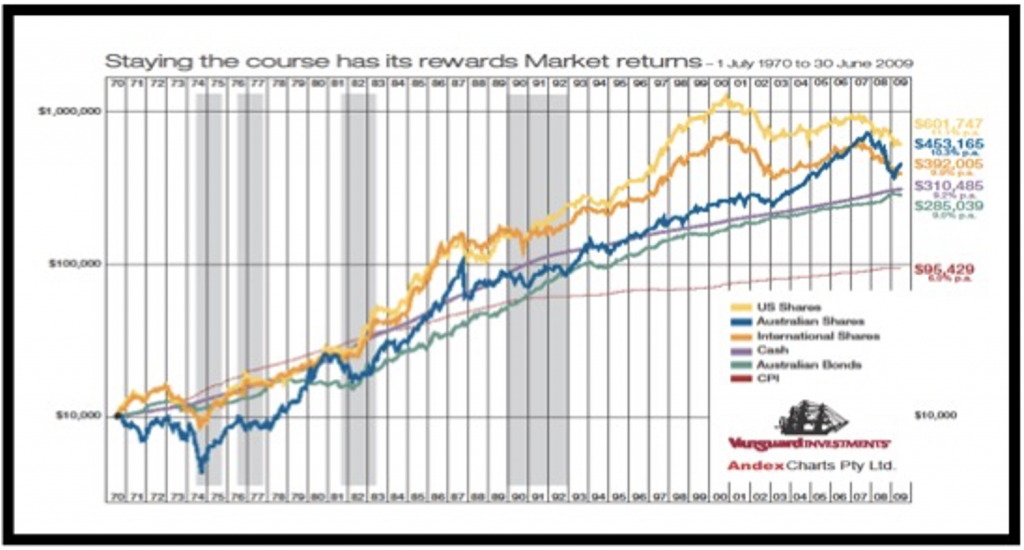

Anyone hoping the current stock market sell-off will end soon should be warned that this volatility with a downside inclination could be here for a couple of months. It could be more but I’m gambling we will see some better trends in October or November but this is my best ‘risky’ guess.
My best ‘sound’ guess is that in 12 months’ time you could be unhappy with yourself if you went too defensive now.
If you did that believing you could buy back into stocks once the scary stuff has gone, you could find that you would have made a mistake!
Timing the market is great if you’re good at it, but few people are and research work by Bank of America confirms this claim.
CNBC recently covered the BOA’s work and revealed that “looking at data going back to 1930, the firm found that if an investor sat out [or missed] the S&P 500′s 10 best days per decade, total returns would be significantly lower than the return for investors who waited it out.”
In fact, “if an investor missed the S&P 500′s 10 best days each decade, the total return would stand at 28%. If, on the other hand, the investor held steady through the ups and downs, the return would have been 17,715%.”
The table below shows what happens if you’re good or bad at guessing the best 10 or worst 10 days for the US stock market.

The AFR recently let Duncan Burns from Vanguard look at the topic and this is what he came up with:
Burns looked at why we try to guess the market and largely get it wrong.
“Psychologists have identified a human tendency for investors to think they have control over events, even when they have none,” he revealed. “When applied to investing, this perception can lead many to see imaginary patterns in stock price charts or spot trends when none exist. But as historical data shows, while the long-term trajectory of the sharemarket is upwards, shorter-term price changes are more random.”
At times like these, I like to show clients this chart of the All Ords between 1970 and 2009, one year after the market crashed 50% because of the GFC. This shows $10,000 invested in 1970 in a portfolio similar to the All Ords with dividends reinvested saw it roll over into $453,542.

Just look at the blue line for the Aussie stock market over that time and see those deep blue V-shaped movements which were crashes in 1974, 1987, the dotcom crash of 2000 and the GFC.
At those times people worried like you might be and those who sold out at the bottom missed out on the big rebounds that followed. Provided you are invested in a good portfolio, your capital return over time and grow like that blue line at a rough rate of 10% per annum over a decade. You just have to keep the faith and be patient if you don’t think you’re a genius market-timer.